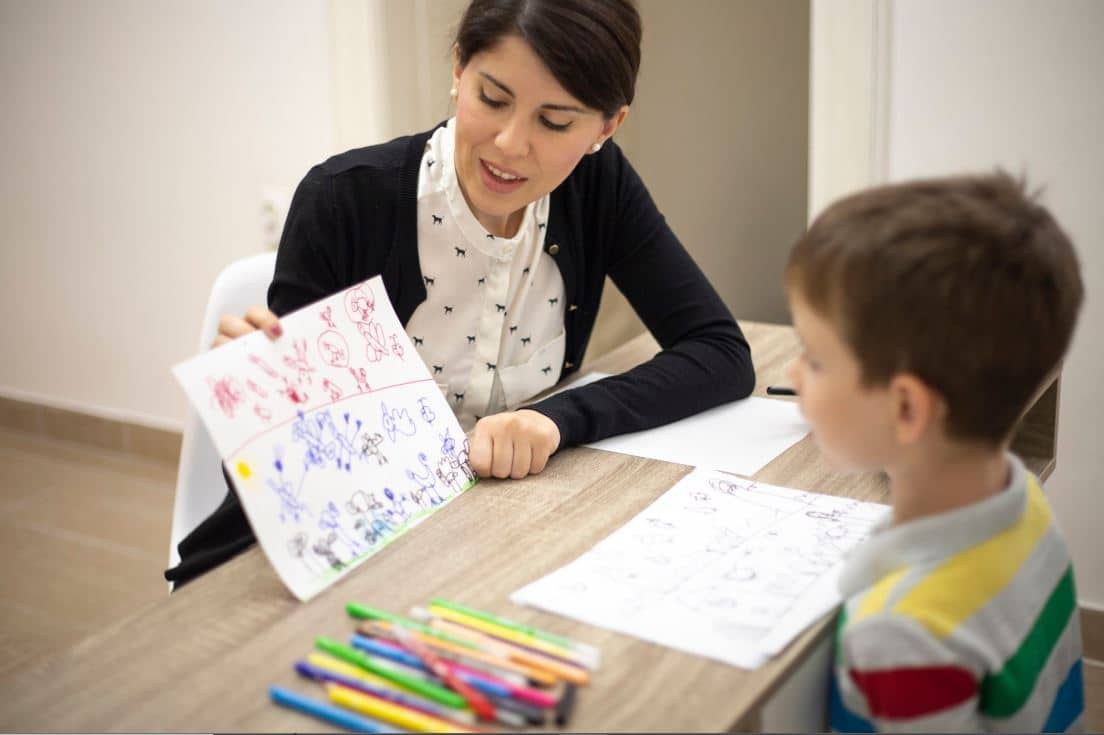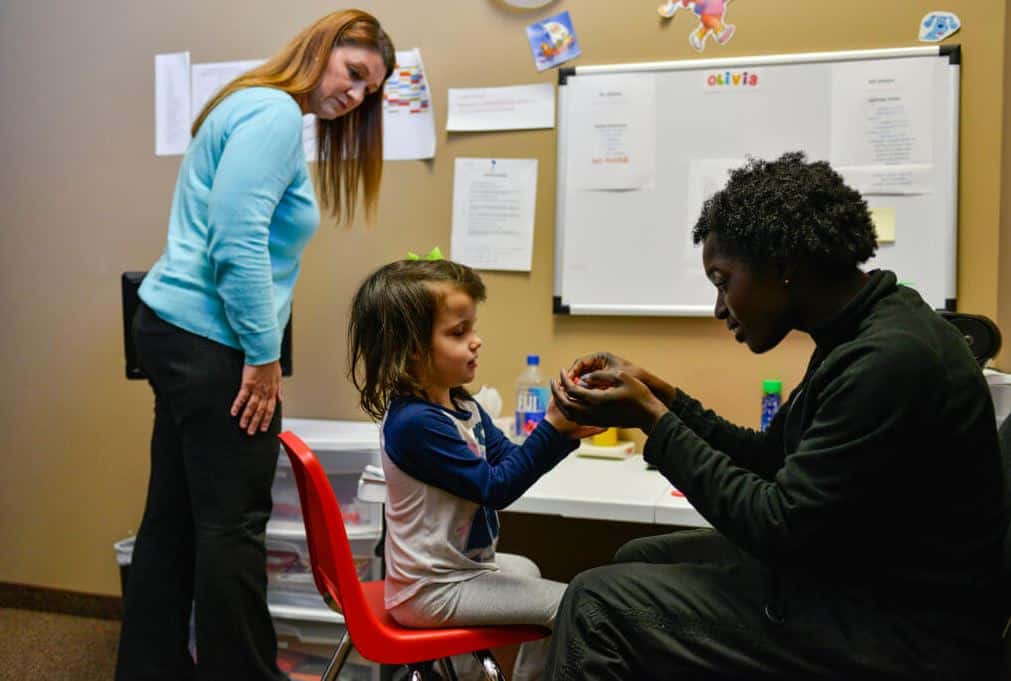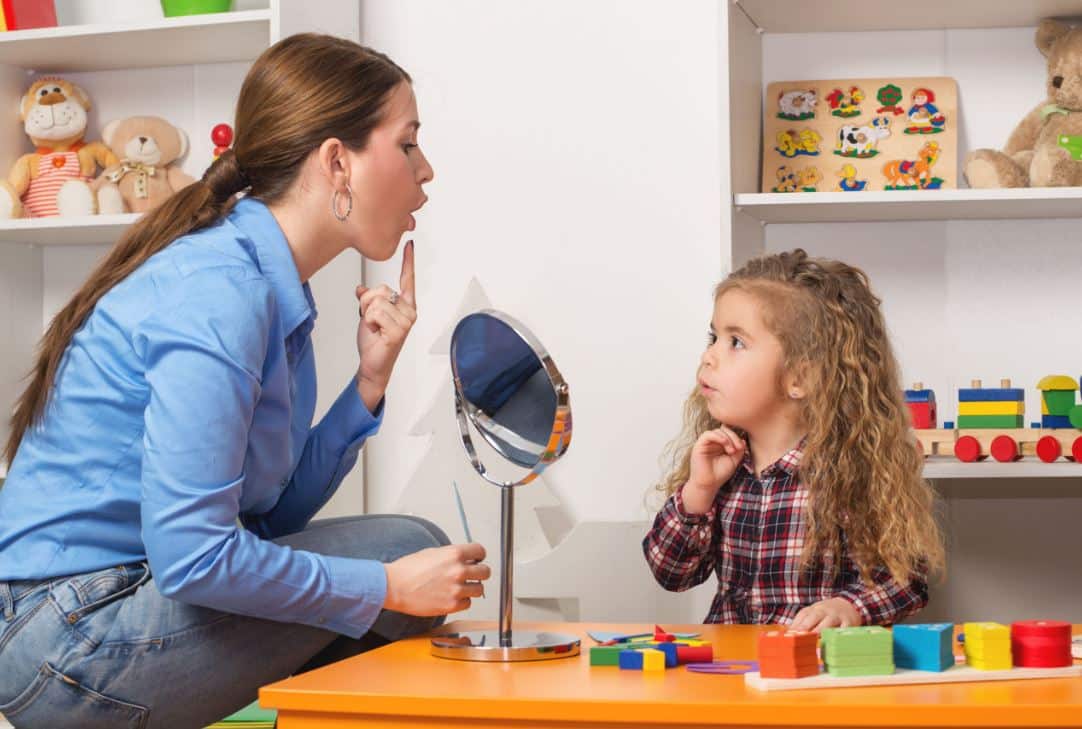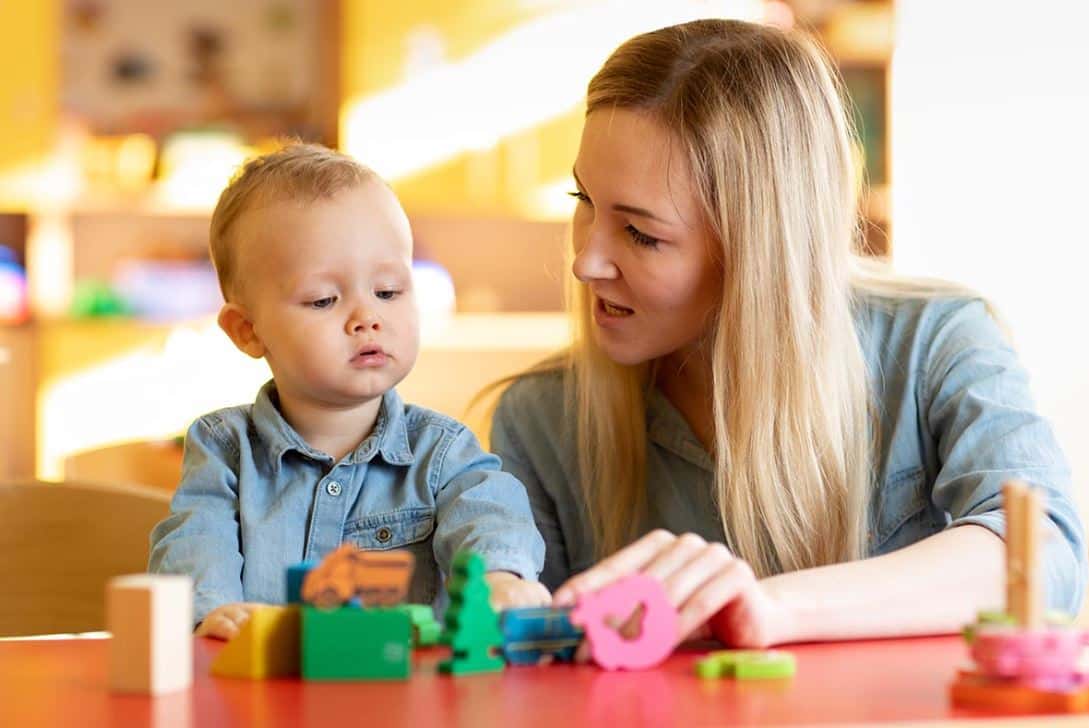For parents of children with autism spectrum disorder (ASD), understanding how to help their child develop and maintain focus can be a significant concern. ABA therapy and attention span development go hand in hand, offering effective strategies to support your child’s learning journey and overall well-being.
Understanding Attention Challenges in Children with Autism
Children with autism often experience unique challenges with attention spans and focus. These challenges manifest differently for each child and can significantly impact various aspects of their development, including:
Language skills and communication abilities
Social and emotional development
Learning experiences and cognitive development
Fine motor skills and sensory processing
Research indicates that children with autism may process sensory stimuli differently, which can impact their ability to maintain focus during learning tasks and social interactions (Ridderinkhof et al., 2024). Parents might notice these attention challenges appearing in different settings:
Success Stories
“Move Up ABA has been a lifeline for our family. Before starting therapy, our son struggled with daily routines and communication. Now, he’s more independent and even initiated a conversation with a classmate for the first time! The progress we’ve seen in just six months is truly remarkable.”
- Emily R., Silver Spring, Accountant
“As a single dad, I was overwhelmed trying to manage my child’s behavior. The Move Up ABA team not only provided amazing support for my little girl but also taught me practical strategies to use at home. Their in-home sessions fit perfectly with our busy schedule. I’m so grateful for their patience and expertise.”
- Michael T., Rockville, Middle School Teacher
“We were hesitant about starting ABA therapy, but Move Up ABA’s approach put us at ease from day one. Our twins have made incredible strides in their social skills and self-regulation. The therapists are like extended family now, and we couldn’t be happier with our decision to work with them.”
- Aisha and James L., Simpson, Police Officers
Ready to start your child's journey to success? Schedule a free consultation today! 📞 Call (410) 497-8865.
At Home
Difficulty following multi-step instructions for daily routines
Struggling to complete tasks without frequent reminders
Intense focus on preferred activities while showing resistance to transitions
Challenges in maintaining attention during family conversations or activities
In Educational Settings

Difficulty staying focused during group activities
Inconsistent performance in learning tasks
Challenges in shifting attention between different subjects
Struggling with complex or extended instructions
During Social Situations
Missing social cues due to attention difficulties
Challenges in maintaining reciprocal conversations
Difficulty following the flow of group interactions
Struggling to divide attention between multiple social partners
Impact on Daily Life
Children with autism may experience varying attention spans depending on:
Environmental factors (noise levels, visual distractions, sensory input)
Time of day and energy levels
Interest in the activity
Complexity of the task
Level of structure and support provided
Understanding these challenges helps parents and professionals develop more effective strategies for support. Fortunately, there are proven therapeutic approaches that can help address these attention challenges.
How ABA Therapy Focuses on Improving Attention
ABA therapy aims to help children develop stronger attention spans through structured, evidence-based behavioral interventions. Through applied behavior analysis, therapists work to create comprehensive improvement plans that address multiple aspects of attention development.
Core Strategies in ABA Therapy
Encouraging Desired Behaviors
Using positive reinforcement to reward focused attention
Implementing token systems for sustained engagement
Celebrating incremental improvements in attention span
Creating motivation through preferred activities
Breaking Down Complex Skills
Starting with brief periods of focused attention
Gradually increasing duration of attention requirements
Teaching self-monitoring skills
Building success through achievable steps
Creating Engaging Learning Environments
Minimizing distracting elements
Incorporating the child’s interests
Using appropriate sensory supports
Maintaining optimal challenge levels
Supporting Sustained Attention
Teaching attention-maintaining strategies
Developing transition skills
Building flexibility in focus
Enhancing attention stamina
Recent research by Asadi et al. (2024) shows that children with autism respond positively to structured learning approaches that incorporate visual modeling and clear attention cues. Their findings support ABA therapy’s emphasis on systematic instruction and focused attention training.
Discrete Trial Training for Attention Development

ABA therapy uses discrete trial training to systematically improve attention skills through:
Short, structured learning opportunities
Clear beginning and end points
Immediate feedback and reinforcement
Consistent instruction methods
Data-driven progress monitoring
Practical Applications
Therapists implement these strategies through various activities:
Attention Building Exercises
Sorting and matching tasks
Following visual schedules
Interactive games
Table-top activities
Skill Development Sessions
Starting with 1-2 minute focused tasks
Gradually extending attention requirements
Incorporating multiple-step instructions
Building complexity over time
Generalization Practice
Applying attention skills in different settings
Practicing with various materials
Working with different people
Transferring skills to natural environments
Measuring Progress
ABA professionals track attention development through:
Duration of focused attention
Frequency of prompts needed
Success rate in completing tasks
Ability to transition between activities
Generalization of skills across settings
While these fundamental strategies form the backbone of ABA therapy, the real power lies in how these methods are customized for each child.
Tailoring Teaching Methods for Success
One of the key strengths of ABA therapy is its ability to adapt teaching methods to each child’s unique needs. Traditional teaching methods are modified to accommodate:
Understanding Individual Learning Profiles
The child’s interest and developmental stage
Individual learning styles (visual, auditory, kinesthetic)
Specific attention challenges
Communication difficulties
Sensory processing patterns
Current skill levels
Customizing Learning Approaches
Visual Learning Strategies
Picture schedules and sequences
Visual timers for task management
Graphic organizers
Social stories with images
Video modeling techniques
Interactive Learning Methods
Hands-on activities aligned with interests
Movement-based learning opportunities
Sensory-integrated activities
Play-based skill development
Technology-assisted learning when appropriate
Environmental Modifications
Structured learning spaces
Minimal visual distractions
Appropriate noise levels
Comfortable seating options
Accessible learning materials
Adapting Communication Styles

Clear, concise instructions
Visual supports for verbal directions
Consistent language use
Appropriate pace of delivery
Regular comprehension checks
Flexible Teaching Techniques
Breaking tasks into smaller steps
Providing extra processing time
Offering choices in learning activities
Using special interests as motivators
Incorporating movement breaks
At the heart of these tailored teaching methods lies one of the most powerful tools in ABA therapy – positive reinforcement.
The Role of Positive Reinforcement
ABA therapy focuses heavily on providing positive reinforcement to encourage desired behaviors and improve attention spans. This evidence-based approach includes multiple components designed to support lasting behavioral change.
Types of Positive Reinforcement
Social Reinforcement
Specific praise
High-fives and celebrations
Smiles and positive gestures
Verbal encouragement
Recognition of effort
Activity-Based Reinforcement
Preferred games or activities
Special helper roles
Choice time
Movement breaks
Interactive play opportunities
Token Systems
Sticker charts
Point systems
Token boards
Achievement certificates
Visual progress trackers
Implementing Effective Reinforcement
Immediate Feedback
Quick recognition of appropriate behaviors
Clear connection between behavior and reward
Consistent response to positive actions
Age-appropriate feedback
Specific praise for effort and achievement
Building Success
Starting with frequent reinforcement
Gradually increasing expectations
Celebrating small improvements
Creating momentum through success
Building confidence through achievement
Maintaining Motivation
Rotating reinforcers to maintain interest
Adjusting rewards based on progress
Including child preferences
Creating exciting challenges
Building intrinsic motivation
Reinforcement Schedules
Continuous reinforcement for new skills
Intermittent reinforcement for maintenance
Natural reinforcement in daily activities
Planned reinforcement during structured tasks
Surprise reinforcement for spontaneous appropriate behaviors
Family Involvement
Training parents in reinforcement techniques
Consistency across environments
Home-based reward systems
Family celebration of progress
Supporting positive behavior at home
This focus on positive reinforcement doesn’t just improve attention – it opens doors to broader developmental benefits.
Supporting Social and Emotional Development: The Broader Impact of Attention Training

While working on attention spans, ABA therapy naturally enhances broader developmental areas. As children learn to focus better, they often show remarkable progress in:
Social skills development
Emotional regulation
Nonverbal communication
Eye contact and social engagement
This holistic development is particularly important because improved attention creates a foundation for meaningful social interactions and emotional connections. The success of these early interventions shows just how crucial timing can be in a child’s development.
The Benefits of Early Intervention: Why Timing Matters
Research consistently shows that early behavioral interventions lead to the most significant improvements in children’s development. When children receive support during their early developmental stages, they often experience enhanced:
Attention and focus capabilities
Language development progress
Social interaction skills
Problem-solving abilities
Understanding this critical window of opportunity, many parents in Maryland seek professional guidance to support their child’s developmental journey. This recognition naturally leads to the question: how can we create the optimal environment for this crucial developmental work?
Creating Structured Learning Environments: From Therapy to Home
The key to successful attention development lies in creating consistent, structured environments both in therapy sessions and at home. Professional ABA therapy services help families establish:
Distraction-minimized learning spaces
Appropriate sensory stimulation levels
Effective use of visual aids
Supportive routines that encourage extended focus
These principles can then be adapted for use in home and school environments, creating a seamless learning experience for your child. While creating these structured environments is essential, we recognize that parents need support in implementing and maintaining them effectively.
Supporting Parents Through the Journey: The Maryland ABA Advantage
Here in Maryland, parents have access to comprehensive ABA therapy services that focus not just on the child, but on empowering the entire family. At Move Up ABA, we understand that parents play a crucial role in their child’s development, especially when it comes to attention deficit hyperactivity disorder and other attention-related challenges.
Comprehensive Family Support
Our approach includes:
Practical Strategy Implementation
Home-based intervention techniques
Ways to encourage desired behaviors
Methods for managing challenging behaviors
Techniques for improving language skills
Strategies for enhancing social interaction
Consistency Across Environments
School-to-home behavior management
Communication with educational teams
Strategies for different social settings
Tools for various daily routines
Support for community involvement
Behavioral Management Tools
Positive behavior reinforcement techniques
Methods for reducing aggressive behavior
Strategies for handling repetitive behaviors
Approaches to improve nonverbal communication
Techniques for extending a child’s attention span
Ongoing Support Systems
Regular progress updates
Parent training sessions
Resource sharing
Problem-solving support
Celebration of achievements
Tailored Interventions for Every Child
Our program recognizes that each child’s developmental stage and challenges are unique:
Customized therapy sessions based on the child’s age
Focus on individual communication difficulties
Attention to specific social skills development
Support for cognitive development
Enhancement of problem solving skills
Professional Expertise and Support

Our team provides:
Evidence-Based Practices
Applied behavior analysis techniques
Discrete trial training methods
Social skills development strategies
Language development support
Fine motor skills enhancement
Ongoing Assessment
Regular progress monitoring
Adapting teaching methods
Tracking of significant improvements
Documentation of skill development
Evaluation of learning experiences
Collaborative Approach
Partnership with occupational therapy when needed
Coordination with speech therapy services
Integration of various therapeutic approaches
Family-centered planning
Team-based intervention strategies
Looking Ahead: Supporting Your Child’s Development
As you consider the best ways to support your child’s attention development, remember that professional guidance can make the journey smoother and more effective. Our approach at Move Up ABA focuses on:
Building Strong Foundations
Developing critical thinking abilities
Enhancing social and emotional development
Improving communication skills
Strengthening learning material comprehension
Supporting overall well being
Creating Lasting Change
Implementing behavioral interventions
Providing positive reinforcement
Supporting language development
Encouraging social interaction
Developing complex skills
Measuring Success
We track progress through:
Improved attention and focus
Enhanced social interactions
Better communication abilities
Increased independence
Stronger cognitive skills
For parents seeking additional information about attention development strategies or ABA therapy services in Maryland, our team is here to provide guidance and support. Through collaborative efforts between families and professionals, children can achieve significant progress in their attention skills and overall development.
Our commitment to providing highly beneficial, tailored interventions helps ensure that each child receives the support they need to thrive. With the right combination of professional guidance, family involvement, and consistent practice, children can develop the attention skills necessary for success in all areas of life.







